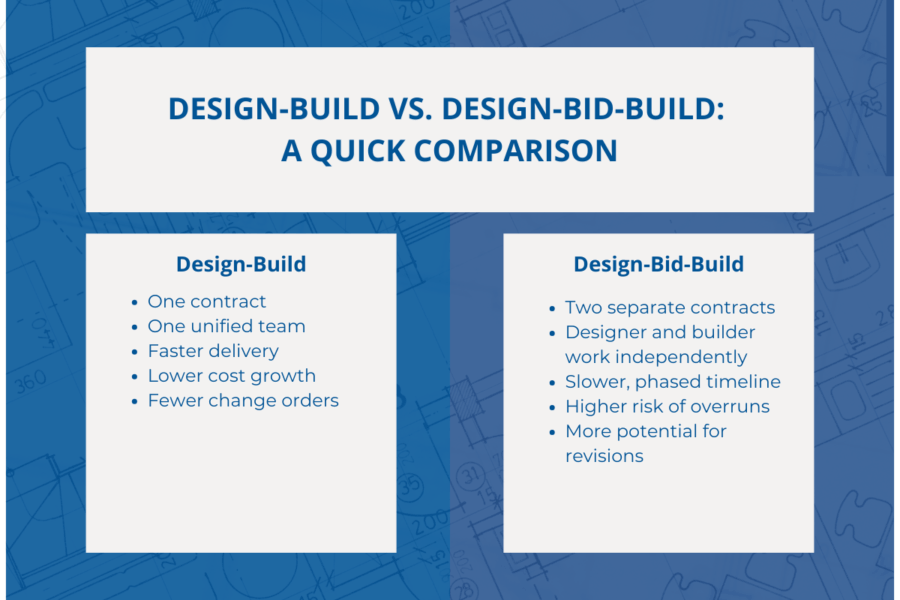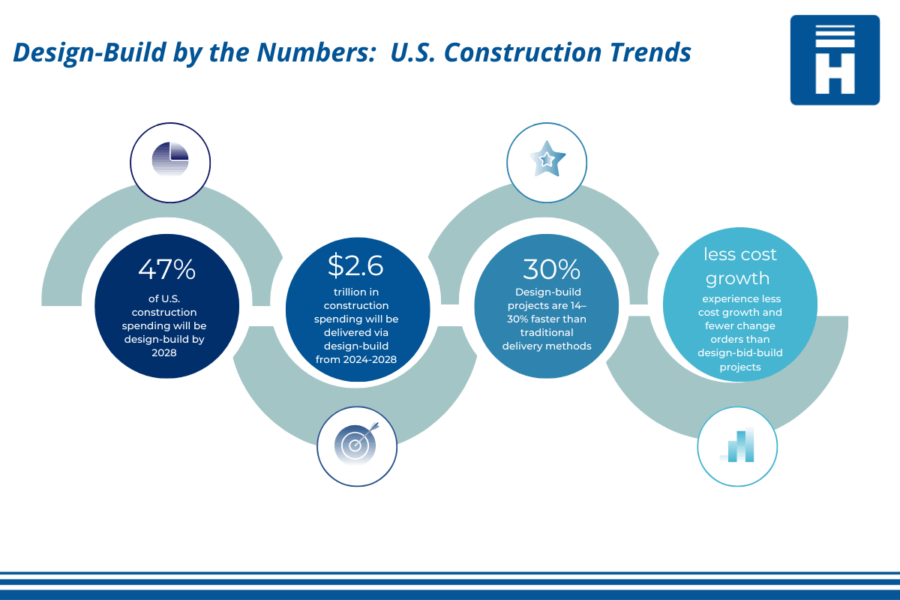As international companies continue expanding their operations into the United States, the construction method they choose can have a long-term impact on project success, not just during delivery, but long after the ribbon is cut. In the U.S., the design-build model has rapidly gained traction as a preferred project delivery method, especially for companies seeking speed, cost certainty, and long-term facility performance. According to the Design-Build Institute of America, design-build is projected to account for more than 47% of U.S. construction spending by 2028, totaling over $2.6 trillion in project value. This major shift reflects more than just a change in contracting preference; it signals broader thinking of how owners and builders collaborate to create spaces that work better, longer.
What is Design-Build
Design-build is a project delivery method in which one entity, typically a construction firm, manages both the design and construction phases under a single contract, unlike the traditional design-bid-build method approach, which separates the architect and contractor into distinct roles. Design-build unifies the team from the start. This structure stimulates collaboration, teams can anticipate issues earlier, respond faster to changing conditions, and prioritize the project’s long-term goals from day one. For international companies unfamiliar with this model, design-build offers a more agile and accountable way to approach construction in the U.S. market.

Immediate Benefits of Design-Build
U.S companies increasingly prefer design-build because of its speed, cost control, and efficiency. Studies show that design-build projects are 14% faster than traditional methods, with significantly lower delays caused by scope gaps or finger-pointing between designers and contractors. This single-source responsibility leads to fewer change orders, reducing costly revisions. It also allows for early cost input, enabling owners to make informed decisions before construction begins. The unified nature of design-build encourages transparency, real-time collaboration, and a team that’s working toward the same goals. This results in a project that stays on time and within budget. In fast-moving segments like industrial, healthcare, manufacturing, and distribution, these efficiencies are essential.

Long-Term Value: Why It Matters Beyond the Build
While speed and efficiency are key advantages, the greatest strength of design-build lies in its ability to drive long-term value. The crucial decisions made during the design phase, including materials, systems, layout, and functionality, have lasting consequences on building performance. In a design-build model, teams can plan with long-term performance in mind from day one. This includes planning for energy efficiency, ease of maintenance, future adaptability, and tenant comfort. Collaborative decision-making reduces rework, supports sustainable outcomes, and results in buildings that perform better and cost less to operate over time. For European firms entering the U.S. market, where facilities are often built with speed-to-market in mind, design-build offers a way to balance immediate needs with long-term return on investment.
Design-build is more than a clear-cut delivery method; it’s a strategic approach to construction that drives long-term value. By aligning design and construction under one contract, this model reduces risk, accelerates schedules, and delivers facilities that are built to perform. For European firms expanding into the United States, embracing design-build can lead to smarter investments, fewer surprises, and more sustainable outcomes. The key is partnering with teams that understand both the local landscape and the global perspective. In today’s market, how you build is just as important as what you build, and design-build helps ensure both are done right.
